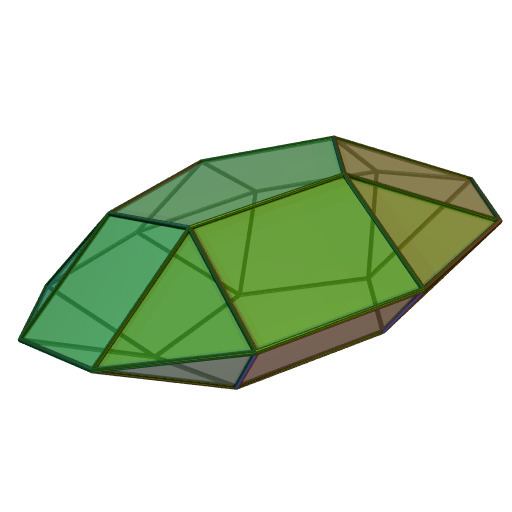Edges 40 Vertex configuration 10(3.4)10(3.4.5.4) | Vertices 20 Symmetry group D5h | |
 | ||
Type JohnsonJ29 - J30 - J31 Faces 10 triangles10 squares2 pentagons | ||
In geometry, the pentagonal orthobicupola is one of the Johnson solids (J30). As the name suggests, it can be constructed by joining two pentagonal cupolae (J5) along their decagonal bases, matching like faces. A 36-degree rotation of one cupola before the joining yields a pentagonal gyrobicupola (J31).
The pentagonal orthobicupola is the third in an infinite set of orthobicupolae.
A Johnson solid is one of 92 strictly convex polyhedra that have regular faces but are not uniform (that is, they are not Platonic solids, Archimedean solids, prisms or antiprisms). They were named by Norman Johnson, who first listed these polyhedra in 1966.
Formulae
The following formulae for volume and surface area can be used if all faces are regular, with edge length a:
